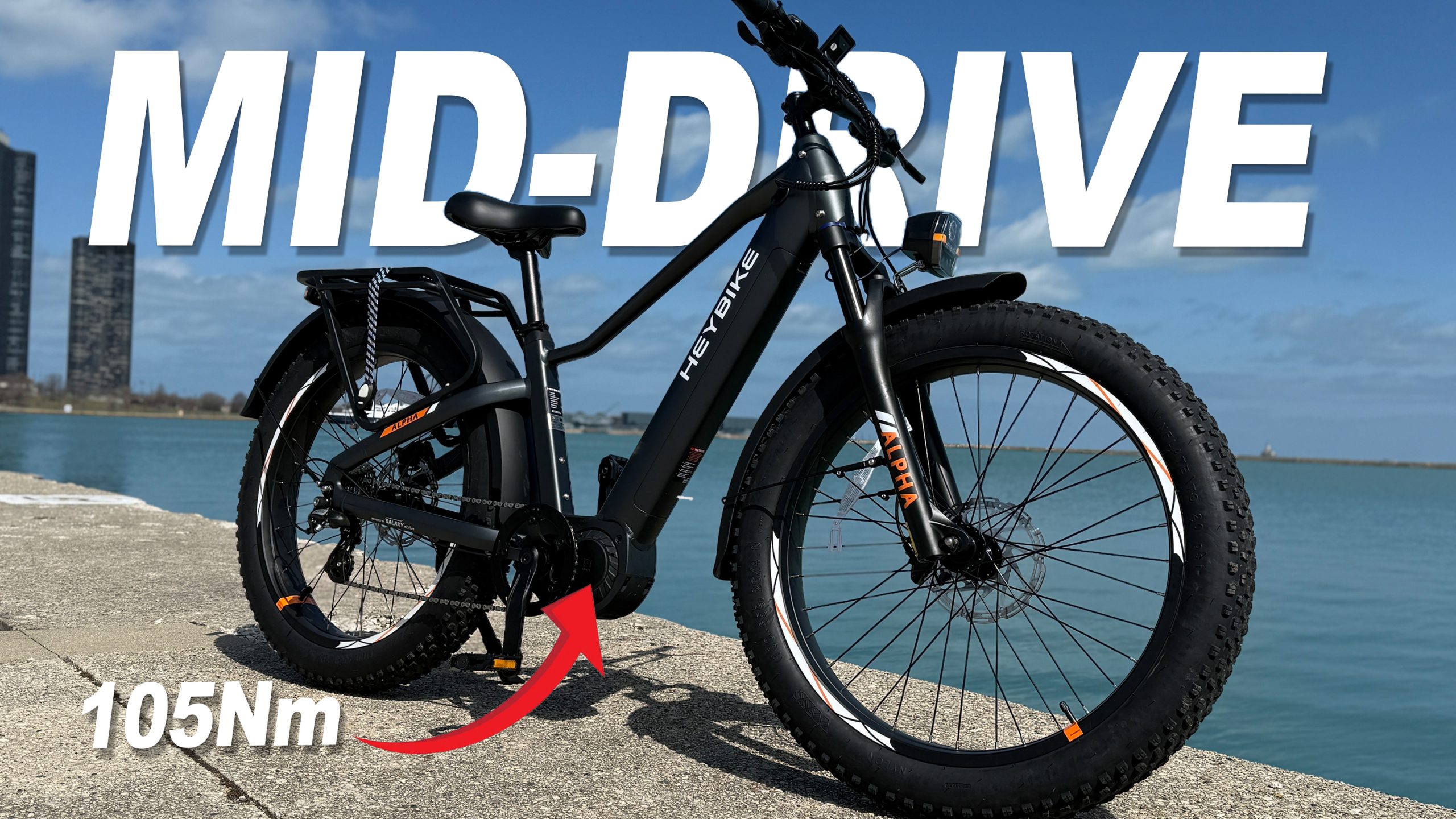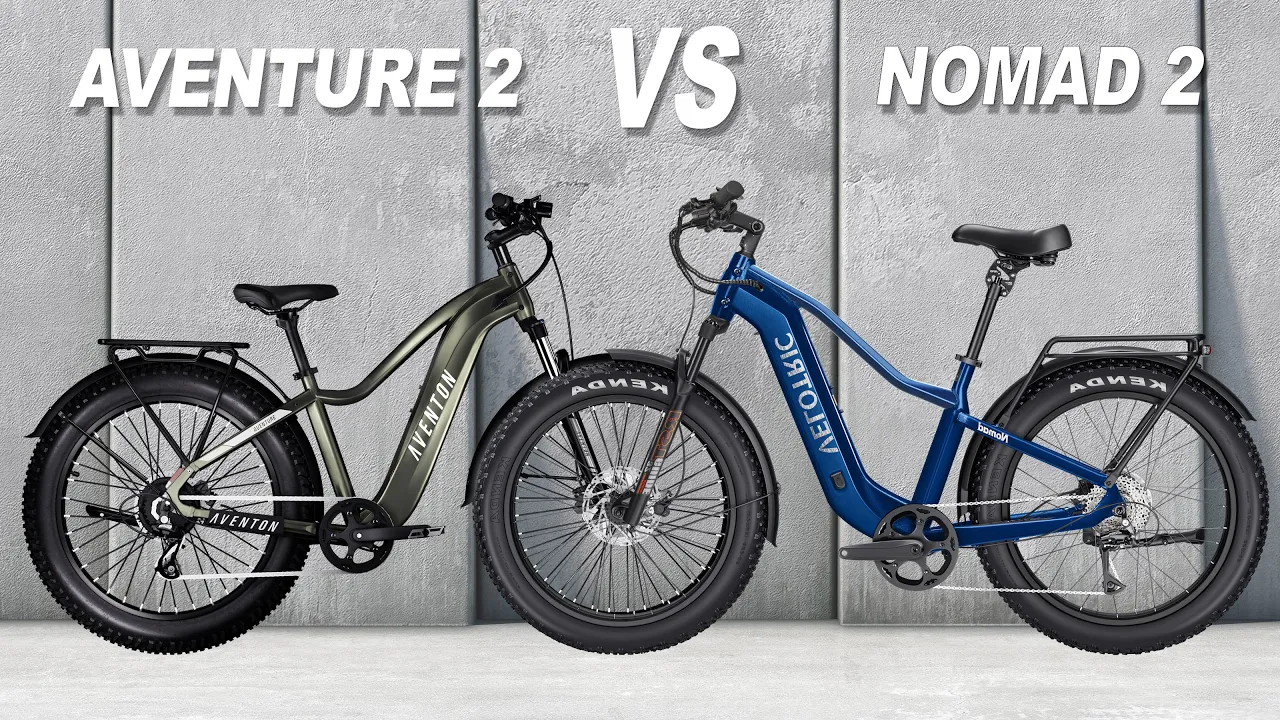RAEV Bullet GT Review
RAEV Bullet GT Review
In this RAEV Bullet GT review, I go over every aspect of this bike. From Specs, Cockpit Operations, various riding levels, and battery distance test. You will not find a more complete review on this bike.
Video Summary
Introduction
- The reviewer introduces the video and mentions the excitement to review the Rave Bullet GT.
“This little nugget of fun is called the Rave Bullet GT. This is one of those bikes and when it came to me I got super excited because I’m like look at this thing.”
Bike features and specifications
- The Rave Bullet GT is a Class 2 e-bike that can reach speeds of up to 20 miles per hour.
- It comes in one size and can handle riders with heights ranging from 5’2″ to 5’11”.
- The bike comes in four different colors: black, green, yellow, and red.
- There are two configurations available: one with a single 20-amp battery for $1799, and another with an additional battery for a total of 28 amps for $2199.
- The weight of the bike with the single battery is 89 pounds, and with the additional battery, it adds around 9 to 10 pounds.
- The Rave Bullet GT has a Cadence Sensor and three levels of pedal assist.
- The single battery configuration is claimed to provide a range of 31+ miles, while the dual battery version can reach 43+ miles on a single charge.
“The Rave Bullet GT comes in one size and handles riders who are 5’2″ up to 5’11”. It also comes in four different colors: black, green, yellow, and red. The bike weighs 89 pounds with the single battery and has a range of 31+ miles. With the dual battery, the range increases to 43+ miles.”
Bike design and components
- The Rave Bullet GT has a 48-volt 750-watt brushless rear hub motor with a peak output of 1000 watts and 75 newton meters of torque.
- It uses a Shimano 7-speed transmission with a Shimano Tourney derailleur and has a derailleur guard.
- The bike features a Nut-branded two-piston hydraulic brake system with 160-millimeter rotors on the front and rear.
- It has a coil spring for the rear suspension with 40 millimeters of play, while the front suspension offers 60 millimeters of play and can be locked out and adjusted for rebound.
- The bike is powered by a 48-volt 20-amp hour (960-watt hour) battery, which can be charged on the bike or removed for charging.
“The Rave Bullet GT is equipped with a 48-volt 750-watt brushless rear hub motor, Shimano 7-speed transmission with a Shimano Tourney derailleur, and Nut-branded two-piston hydraulic brake system. It also has full suspension, with 40 millimeters of play in the rear and 60 millimeters in the front. The bike is powered by a 48-volt 20-amp hour (960-watt hour) battery that can be charged on the bike or removed.”
- The Rave Bullet GT features a Moto-style headlight on the front and integrated front and rear lights that are powered by the bike.
- It comes with a 20 x 4-inch fat tire, suitable for both street and off-road riding.
- The bike has plastic fenders on the front and rear.
- Cockpit operations include a power button, pedal assist levels, and trip meter on a basic LED screen.
- The bike has comfortable leather or faux leather grips with palm rests.
“The Rave Bullet GT features a Moto-style headlight, integrated front and rear lights, a 20 x 4-inch fat tire, and plastic fenders. Cockpit operations include a power button, pedal assist levels, and trip meter on a basic LED screen. The bike also has comfortable leather or faux leather grips with palm rests.”
Accessories and additional information
- Accessories available for the Rave Bullet GT include a touring case, rear basket, rear pannier rack, and rear carrier.
- There is a larger version of the Bullet GT called the GTX, but no further specifications are mentioned.
“Accessories available for the Rave Bullet GT include a touring case, rear basket, rear pannier rack, and rear carrier. There is also a larger version of the Bullet GT called the GTX.”
Pedaling Experience
- The reviewer starts by pulling over and stopping the bike to start the pedal test.
- Due to the bike’s low and unique design, the reviewer adjusts the gears for a better pedaling experience.
- The bike’s seating position causes the reviewer’s knees to come up high, making pedaling uncomfortable.
- The reviewer concludes that pedaling is not easy or pleasant on this bike and anticipates that most riders will rely on the throttle instead.
“Because of the way this bike is so low and the way it sits, my knees come up to my chest. Due to that, I will not be pedaling this bike much, and I don’t think you will be either.”
Throttle Test – Pedal Assist Levels
- The reviewer starts the throttle-only test in pedal assist level one and notes that the throttle locks out at 12 mph.
- The reviewer increases the pedal assist to level two and achieves a cruising speed of approximately 16 mph.
- Moving up to pedal assist level three, the reviewer notes that the bike effortlessly reaches and maintains speeds of around 28 mph.
- The reviewer highlights that the bike has been unlocked from class two to class three for testing purposes, allowing for higher speeds.
“This thing is definitely gonna do 28 miles an hour just by throttle only.”
Pedal Assist Test – Speed and Power
- The reviewer tests the pedal assist levels by pedaling the bike.
- In pedal assist level one, the bike reaches a comfortable speed of 13 mph.
- Switching to pedal assist level two, the average speed achieved is 16 mph.
- The reviewer experiences ghost pedaling at higher speeds and assumes that the bike may not be suitable for extensive pedaling.
- Pedaling in pedal assist level three, the reviewer finds it challenging to keep up with the bike’s speed at 25 mph.
“The bike will go faster, but at 25 miles an hour, we start to ghost pedal. This is not the kind of bike that you want to just pedal around the city.”
Throttle Control and Free Riding
- The reviewer points out that when releasing the thumb throttle, the bike maintains its speed without decelerating.
- They highlight the sensation of “free riding” since the bike does not throttle back when the throttle is not engaged.
- This feature makes for a smooth and enjoyable riding experience.
“When you take your thumb off of the thumb throttle, the bike does not throttle back. You’re still just moving right along. It’s like it’s free riding.”
Hill Climbing Test
- The reviewer approaches a hill to test the bike’s performance.
- The full suspension allows the bike to effortlessly navigate the cross-country terrain.
- The bike handles the hill climb with ease, showcasing its torque power generated by the 75 Newton meters (Nm) of torque.
- They mention the possibility of unlocking the bike to increase power and speed.
“This bike made it to the top of the hill very easily, so the 75 Newton meters of torque seems to be working rather well.”
Bike Performance
- The bike was fully charged before starting the test.
- The top speed test is about to begin, to see how quickly the bike reaches its top speed.
- The rider will mostly use the throttle for speed, with some pedaling.
“We are going to do the top speed test and see how long it takes us to get to top speed.”
Suspension Performance
- The bike has full suspension, which makes riding over speed bumps fun.
“As I hit these speed bumps, it’s fun.”
Brake Test
- The first brake test will be conducted after picking up speed.
- The second brake test will also involve picking up speed and then slamming on the brakes.
Battery Mileage Test
- The aim is to see how long it takes to wear the battery out.
- At 9 miles, there are still three bars of battery power remaining.
- The rider drops down to two bars at 10 miles.
- The battery fluctuates between one and two bars, making it uncertain how much power is left.
“We’re just out here riding around having fun and we’re gonna see how long it takes to wear this battery out.”
- The rider decides not to continue to Lake Shore Drive due to concerns about the battery.
- The battery occasionally resets the trip mileage when turned off.
“I don’t think I have the battery to make it to Lake Shore Drive… I’m gonna turn around at this point and we’re gonna start heading back.”
Battery Fluctuation
- The battery fluctuates between two and three bars, making it difficult to accurately gauge the remaining power.
“I really don’t like this part where you can’t really be sure on how much battery power you do have.”
Continuing Test at Highest Speed
- The rider decides to continue the test at the highest speed until the battery reaches one bar.
- The bike feels like a mini motorcycle.
“I’m gonna put it back into the highest speed until we get down to the one bar flashing and then I’ll cut it down.”
“That thing will go so… you can just have all-out fun in the highest speed mode.”
Bike performance and battery life
- The reviewer is about 45 miles from home.
- They decide to kick the bike down into gear two and cruise at about 60 miles per hour.
- The battery power is low, so they pull over to check the mileage.
- The bike has traveled 14.53 miles, and the battery is flashing.
- They switch to pedal assist mode three and continue riding.
- The hydraulic brakes are working well.
- They have about three miles to go before reaching home.
- The battery starts flashing again and the power begins pulsing.
“When you’re used to this bike doing 26 plus miles, cruising at 16 miles an hour just feels like you’re just creeping.”
Power and performance
- The battery stops flashing, so they switch back to pedal assist mode three.
- The reviewer is pleased with the hydraulic brakes.
- They have three miles to go, but the battery is flashing again.
- The power starts pulsing, so they switch to pedal assist mode two and continue cruising.
- The bike is running at about 660-670 watts.
“The battery quit flashing, so we put it back up to pedal assist number three.”
Battery depletion and bike performance
- The battery suddenly dies and the bike shuts off completely.
- They check the mileage and find that they have reached 15.88 miles.
- They have two miles left to pedal home.
- The reviewer reflects on their decision to explore Lakeshore Drive and acknowledges that it may have been a mistake.
“Wow, this bike completely died. It just totally died, it just cut off.”
Overall bike performance and experience
- The reviewer had to pedal the bike for the last couple of miles.
- Despite not making it all the way home, they express that the experience wasn’t as bad as anticipated.
- The bike performed well during the 90-minute ride, considering the uphill climbs and tests.
- They enjoyed zipping around and have a positive impression of the bike.
“We made it back and, as you saw, I didn’t quite make it to the house and had to pedal a couple of miles, but you know what? It really wasn’t that bad on this bike.”







